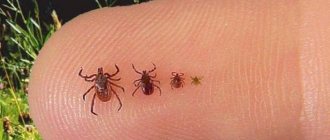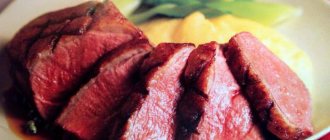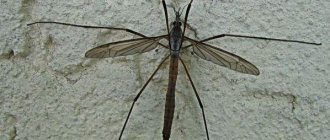Any village resident who has poultry and any experienced farmer or just a person who likes to eat scrambled eggs should know how many years a laying hen lives and how long she can lay eggs? Well, if you are not a farmer, do not live in a village and are indifferent to eggs, then you will simply be interested in reading this article!
In order to correctly answer this question, we first need to determine the breed of the bird! Since chickens are long-tamed animals, they are very useful and do not cause much trouble. Birds lay eggs and produce meat, not to mention numerous offspring! And they were bred specifically for the benefit of society, from 5 to 12 varieties, and each breed has its own cycle and lifespan!
These animals are mainly divided into three types:
- meat chickens;
- egg hens;
- meat and eggs.
Let's take a closer look at each type. Let's find out what they are intended for and how long they last. Because now even an experienced farmer will not tell you the exact life time, since farmers use chickens for 2 years, until they are able to reproduce, lay a regular and large number of eggs and have good meat, then they are exterminated.
- Meat chickens are the most popular type among farmers. It is designed mainly to bring meat to the family, the name gives it away! Basically, such chickens are kept in factories and large factories, people wait until they gain a certain weight, and then they kill them. The lifespan of such hens is approximately 60 days.
- Egg hens are another very popular and sought-after breed of chicken; they are kept mainly for eggs; you can find them among ordinary people or in factories. The lifespan of this species reaches 1.5–1 year and 7 months.
- Meat-egg birds are a unique breed, chickens of this breed are very useful, they lay a large number of eggs, they have good meat and they are able to prolong their family!
Basically, the life of a bird and how long it can lay directly depends on its nutrition, space, food bowls, conditions! What determines the lifespan of a chicken and how to extend it?
As we have already told you, if you want to have a healthy chicken, and for it to bring you a lot of benefits, then you need to give it some conditions!
- Correct diet. If your chicken doesn't eat well, you won't get eggs and she won't gain weight. Soybeans, pea crops. Wheat, in general, grains are relevant all year round. Cake from oat processing. Greens are a source of vitamins. Juicy feed.
- Territory. Every bird must have its own space. It's either a big paddock. Or, if you live in villages, you generally don’t need to lock them, so she can run longer. Since any chicken needs to walk and run a lot. And they can also buy some food and useful vitamins there, which even the owner cannot give them!
- Correct lighting and temperature. It’s better to let your birds walk in natural light, in the sun, I don’t think there’s any need to explain this. And the temperature should not exceed 20 degrees. This storage can be in the summer, in a very favorable year.
- Facilities. You must protect your pets, for example, protect them from enemies and provide them with basic amenities that you yourself can come up with. For example, build a special feeder with your own hands or buy one for food and water. Then place several of them and not too close. Here's how to understand the comforts of a laying hen, which will help her lay longer!
And if you give your laying hens everything that is described here, they will live longer and happier, thereby increasing their income!
How many years do laying hens live at home?
Many farmers, especially beginners, before raising egg-laying chickens on their farmsteads, ask themselves the question: how long do these individuals live? The answer to this question is known - the better your pets are cared for, the healthier they will be and the longer they will live.
Studying documents on the origin of domestic chickens, experts found evidence that in natural conditions the life expectancy of their wild relatives reached 12-14 years, and sometimes more. But in nature, wild chickens often became prey to predatory animals, so their lifespan rarely exceeded 10 years.
But in private backyards, these birds do not live longer than 3 years, because it is not profitable for owners to keep domestic birds longer - their egg production is too reduced, and the quality of meat products also deteriorates with the age of these pets. Provided good maintenance and nutrition, laying hens can achieve good egg production throughout all these seasons. But longer maintenance, even in good conditions, usually does not lead to maintaining the productivity of laying hens; it still decreases quite sharply. Therefore, when kept at an age of more than 3.5 years, these birds only bring losses.
Old women are laying hens. How many years do chickens live: video
The influence of nutrition on the duration of the chicken eyelid
How long laying hens and other species of these birds live at home is influenced by:
- food quality;
- living conditions: temperature, humidity, chicken coop area;
- proximity of predators;
- possibility of walking;
- diseases.
It is believed that the chicken is unpretentious. But she also needs comfort for a full life. So, a balanced diet is necessary. You need to give food three times a day, not more often. It should be varied. Dry food in the morning. Wet mash in the middle of the day. In the evening - grains, which must be alternated.
Improper nutrition leads to obesity or emaciation of chickens. To reduce their immunity and productivity. To problems with the digestive tract.
This directly affects how long chickens live. To improve the quality of nutrition and prolong the life of birds, add vitamin and mineral supplements and herbs to the menu.
How long do roosters live?
How many years do hens and roosters live? A male under natural conditions is capable of reaching thirteen years of age. On a farm, roosters do not live to be 13 years old.
If the male is a meat breed, then his life expectancy is equal to the duration of meat females. The reason for this is active weight gain.
If the rooster is of the egg breed and the purpose of keeping the bird is to breed young animals, then poultry farmers keep the male only as long as his sexual activity lasts. Poultry farmers keep one cockerel for every ten hens. With the right load, the male is active for 4 years. If the farm is large, then experienced farmers take no more than 6 roosters per 100 hens. With such a load, roosters live no more than three years. The older the male, the tougher his meat.
How to determine age?
It is very important for timely rejuvenation of the chicken coop and slaughter of birds at the right time to be able to distinguish old chickens from young ones. It is not always possible to trust bird sellers about their age; often unscrupulous breeders try to sell old birds under the guise of young ones. To distinguish that these are young chickens in front of you, and not old birds that are no longer capable of benefiting, you need to pay attention to the following points.
- The color of the paws and the beak itself. In most breeds of chickens, these parts in young birds have a lighter and slightly glossy color, while in older birds they are painted dark yellow, one might even say orange.
- Plumage. If it is bright, shiny, uniform, it means that this is a young bird, and the more new small feathers it has on its body, the younger its age. Adult chickens, especially old ones, have dull, frayed feathers, while new ones are practically absent.
- Condition of the skin on the paws and beak. The more worn these parts of the body are, the more wrinkled the skin on the limbs of the bird, the older it is and the less benefit it will bring to its owner.
- Bird activity. Pullets are always more nimble and agile, but the older the hen, the less she moves and the slower she tries to approach the feeder.
- The size of the abdomen and its elasticity. In young chickens, this part is small, soft and practically does not stick out. In old birds, the stomach is always elastic and harsh.
- Color of the pupil and cornea. This evaluation criterion is considered one of the most reliable. In a young bird, the cornea is always white, and the pupils have a bright, rich yellow color.
The duller the birds' eyes and the darker their color, the older their age.
These criteria are suitable for estimating the approximate age of both hens and cockerels. At home, you can determine how old a laying hen is by the condition of her eggs.
- The yolk is very spreading, pale in color, and large eggs with a thin skin are usually laid by old laying hens. Moreover, the thinner the shell, the older the bird.
- Eggs weighing up to 60 g, with a bright yellow yolk that practically does not spread and a hard shell, on the contrary, are characteristic of pullets.
The age of the bird is one of the key criteria that allows you to determine in advance how useful it will be in your personal household. And taking into account the factors that influence the life expectancy of a bird will allow you to calculate the economic benefits and benefits as accurately as possible.
To see how many years chickens live, see the following video.
Average lifespan of a chicken
Scientists and farmers have calculated how long a chicken lives on average. However, these data are ambiguous and vary significantly. The reason for this is the difference in breeds. In addition, chickens are bred for two reasons - to lay eggs and for meat.
On average, a laying hen lives 5 years. Meat chickens are kept on the farm until they grow up - usually no more than three months.
Reference. Poultry farms keep birds no older than three years old. The majority are young animals under one year old – 60%, older than two years – 30%. Only 10% of birds are older than three years of age.
Life cycle of chickens
To understand how a bird grows and develops, it is necessary to study its life cycle in detail:
- The appearance of a chicken. The first week of a bird's life is very important. During this period, chickens need certain food and temperature control. The highest mortality of birds is observed in the first 7 days of life.
- Age from 2 weeks to 4 weeks. During this period, the chickens are transferred to a new room where the air temperature is 5 ℃ lower. The food is more coarse. This is a period of active weight gain.
- 4-5 months. For egg breeds, this is the age of full maturation of the reproductive system and the beginning of egg production. For up to a year, laying hens will produce the maximum number of eggs per month. After the first year, productivity will gradually decline. It is important to monitor the correct and adequate nutrition of birds.
- First mating with a male. Poultry farmers breed females with roosters to fertilize eggs and breed offspring. After mating and laying, hens of purebred breeds incubate future offspring for 20-25 days. Hybrids and crosses have lost their brooding instinct. Therefore, to breed new livestock you will need an incubator.
- Raising chickens. The new mother teaches the chicks to feed on their own and find food. A purebred hen protects her chicks from various kinds of dangers.
- 3-5 years of life. A drop in productivity to the point where feed consumption exceeds the number of eggs laid. At this age, the bird goes to slaughter.
Long-lived record holders
The oldest chicken on our planet, which was listed in the Guinness Book of Records, lived for 14 years. There are also other record holders for life expectancy, but they are not documented. There is evidence that some chickens lived a maximum of 25 years.
In China, a case was recorded when a chicken lived 22 bird years - that’s 400 human years. Yang Shaofu, who turned 77 years old, reported this amazing chicken to reporters. The daughter-in-law purchased four chickens in 1988, three have long since died, and one is still pleasing to the eyes of the owners. Initially, she was not like everyone else, because the bird laid her first egg at 2 months, and the rest at six months of age.
Experts say that it is typical for a chicken to live for about 8 years; the maximum lifespan of a chicken in Ukraine was 12 years. The owner of this amazing bird claims that there are no secrets to longevity.
Each breed has a different life expectancy, which can always be increased. In the table you can see the most common breeds and their life span.
| Breed | Lifespan |
| Loman brown | 3-3.5 years |
| Russian chickens | 3 years |
| Brahma | from 2 to 4 years |
| Koninkhin | 4 years |
| Plymouth Rock | 10 years |
| Hisex | 3 years |
The lifespan of a chicken depends on many factors: feeding, maintenance, diseases, various breeds, etc. Before you buy chickens, you should make sure for what purpose they are needed, because birds are meat, egg and meat-egg. The average life expectancy is 8 years, but in our world there are record-breaking long-livers who lived much longer than ordinary chickens.
0
0
Copy link
Meat chickens
The lifespan of chickens raised for meat is measured in months. For these breeds it is only two months. The exception is hens, which are kept to hatch chicks. Their life expectancy is five years or more.
With age, the meat of chickens of this type becomes worse, which is why they are used for meat so early. In household conditions they live up to a year. This is influenced by the fact that natural food is used for feeding.
At poultry factories and farms, special additives are introduced into chicken feed that accelerate their growth. Therefore, at the age of one and a half months they reach a decent weight, and their life ends there.
Egg hens
Domesticated birds can be found in every household. In the first year of life, their egg production is highest. The hen's performance can be maintained at a high level for a short time with proper feeding. But still, by the third year of life, the chicken begins to lay fewer eggs. It is up to the owner to decide whether to leave the bird on the farmstead or to obtain meat from it. Of course, chickens that have a good instinct for hatching eggs are not sent for meat. As a rule, these are excellent mothers; they are left on the farm for a long time as an incubator.
Farms don't need laying hens. The eggs are placed in an incubator to hatch into chicks. How long do laying hens live? When grown at home, their average lifespan is three years, sometimes four or even five. This is influenced by the fact that the requirements for domestic laying hens are less serious. How long do laying hens live? They live on a poultry farm for a year and a half.
Directions for the development of chicken stock
Chicken meat is tasty and nutritious, so its production is rapidly developing to meet human needs. These are broiler breeds that quickly gain weight during fattening. They reach marketable weight and taste by one and a half months of age. Will the manufacturer keep them for a year and feed them if this degrades their nutritional value? Part of the livestock will be left for reproduction, the rest will end up in pots.
Laying hen breeds are intended for commercial egg production. At the same time, egg production of up to 200 eggs per year from one individual is achieved. Naturally, its reproductive apparatus quickly wears out during intensive work and, after working for two or three years, sharply reduces productivity. In addition, by the third year of life, the meat of such a laying hen becomes very tough and unsuitable for food. This is the reason why laying hens are kept at the factory for a short time.
Chickens are bred at home and in poultry farms. At the same time, the keeping of the birds is completely different. A poultry farm, in conditions of densification of the chicken population, reduces maintenance costs, and therefore the cost of production. Therefore, in cramped enclosures the birds have no opportunity to move. According to physiology, the constantly growing claws on the legs bend in all directions and the individual taken from the poultry farm is almost unable to walk, the claws get in the way.
Such a bird cannot fly to roost. Usually, by the end of the second year, despite intensive feeding, these birds have a poor appearance; they peck feathers from each other. All nutrition is provided in such a way as to ensure good egg production, so the apparatus wears out and the uterus holds weakly and sometimes falls out. Such individuals are rejected.
At a poultry farm, the livestock usually consists of:
- young animals - 55-60%;
- two-year-olds – 30-35%;
- three-year-olds – 10%.
In the third year, individuals whose egg production is within normal limits are left. Carcasses of culled livestock are sold at a lower price as soup meat, since they take a long time to cook and the meat is tough. Some of the rejected birds are sold to dacha cooperatives, extending the life of the birds for another season. How long laying hens live for summer residents depends on the possibility of keeping them in winter.
The broiler flock is kept in pens for a month and a half and is intensively fattened. When the weight reaches 2 kg, fattening is completed and the livestock goes to the slaughterhouse. Keeping broilers longer is not economically profitable and the meat loses its tender consistency.
Therefore, the life cycle of chicken stock in poultry farms is short and meets economic feasibility. How long laying hens live depends on their ability to lay eggs.
In rural farmsteads, chickens are kept in comfortable conditions. She has the opportunity to peck all day long, dig in the ground, sleep on perches and walk with the rooster, which is important. That’s why backyard chickens are always beautiful and fun to watch. Such birds live for a longer period, but with a decrease in the ability to lay eggs, a saucepan awaits them. How many years do chickens live in the village? In farmsteads, chickens live up to five years, and for some compassionate old women, up to 7 years.
Feeding chickens
The basis of the diet is grain crops, but this is not enough, since the diet of poultry must be varied. If you feed a laying hen with balanced food, its lifespan will be at least five years, while productivity will decrease by only 15-20%. What is the best way to feed a chicken? The food must contain vitamins, carbohydrates and minerals. Bird food includes the following products:
- Legumes - soybeans, peas and others.
- Cereals - corn, wheat, oats.
- Cake.
- Greens - cabbage leaves, beets, stems, young shoots.
- Sunflower seeds, especially in winter, are preferred by chickens.
- Shells, limestone pebbles, eggshells, previously crushed into crumbs.
- Leftover meat, fish or flour from them.
The basis of nutrition for chickens kept on poultry farms is compound feed. Its composition is, of course, balanced, but not diverse. In the summer, it is very important to allow chickens to move freely. Since they are weedy birds, when walking in the garden or on the lawn, they themselves will find something to eat. Therefore, during the summer season they should be fed once a day. During the winter cold period, the frequency of feeding increases up to two times.
Noisy creatures
Chickens, and especially young chickens, are very noisy poultry. They love to run, jump, chatter, and sunbathe when given the opportunity. There are a huge number of reasons why a real commotion can arise in a chicken coop “from scratch” - starting with the appearance of a stranger in the house, undivided feed and ending with the solemn announcement “I’m finally laid!” Meanwhile, millions and millions of birds on modern poultry farms spend their entire lives in cramped poultry houses, the area of which is barely larger than a sheet of A4 paper.
Chickens, and especially young chickens, are very noisy poultry.
Economic direction
Farmers calculate the maintenance of animals based on the minimum amount of costs, but at the same time the profit should be received as much as possible. Egg breeds of chickens show the highest productivity for 2 years, after which the bird’s further life no longer makes sense. From a practical point of view, even these terms do not always correspond to reality; not every farm can be suitable for the conditions in which birds live. For example, many began to use bacterial bedding for chicken coops, which makes the birds’ living conditions more comfortable.
Most often, chickens are kept for 365 days; unbalanced feeding and harsh living conditions lead to a decrease in egg production. We will talk about proper diet a little further. Homestead farming allows birds to live a little longer. The feeding may not be very plentiful, but in the walking yard the chickens will always be able to find additional food in the form of seeds or insects. In addition, the birds are exploited in a more gentle manner. On average they will live for about three years. Further existence is determined by the quality of the chicken and the owner. Meat products from such birds are still considered dietary and light. But if a laying hen has managed to prove herself as an excellent hen, then it is preferable to leave her to hatch eggs, even if she does not lay eggs herself.
Time indicator
Chickens are not long-lived. In the wild they have many natural enemies. In addition, it is not always possible to find a sufficient amount of food, and weather conditions (frost) have an impact on the lifespan of the bird. As for the natural period, it reaches 15 years. However, in a private household no one will keep a laying hen for that long. Life expectancy is influenced by breed indicator. Meat birds rarely live more than 90 days because... By this age they gain the required weight and go under the knife. Egg-bearing representatives are kept a little longer while they are fertile.
Chicken as a species
The biological species of gallinaceae includes a number of birds bred at home and living in the wild. It belongs to:
- pheasants and peacocks;
- black grouse and partridge;
- guinea fowl and turkeys.
All of them are used by people as food, some species are bred for decorative purposes, and some live in the wild. Hoacinths also belong to the order Gallinae. Chickens exist only in domesticated form and will not survive in the wild. Man has bred 240 breeds for his needs. Among them, there are two directions in which breeding work is developing.
Classification of hens and roosters
Chicken farming is an important component not only in the field of poultry farming, but also in the development and development of agriculture. Huge poultry farms , industrial farms, and farmlands in the world Dietary meat and chicken eggs are irreplaceable products on the table in every home. Poultry down and feathers are used as raw materials in the manufacture of various products. In agronomic practice, poultry waste - manure - is widely used as a natural fertilizer.
Today, by world standards, there are approximately 180 breeds of chickens and roosters. Depending on the purpose, four main groups can be distinguished:
- egg (laying hens, small in size, ripen quickly and early);
- meat - eggs (universal birds, have high hatching intelligence);
- exclusively meat (broilers, less early ripening, with a well-developed muscle corset);
- decorative (priority - beauty).
The main number of meat and egg breeds of chickens was obtained by merging egg and meat breeds. It is very profitable to breed this species on the farm. A distinctive feature of this species is its noticeable double productivity : eggs in sufficient quantities plus meat. In addition to the listed advantages, meat-egg chickens are not picky about care, they do not need to be kept in high fences, and the birds are highly resilient.
External signs
The weight of the bird depends on the breed; as a rule, these parameters range from 1.5 to 5 kg. Roosters, of course, are larger in volume, and fluctuations in the weight segment can reach up to 1 kg. Dwarf chicken breeds have a very small weight, ranging from 500 g to 1.2 kg.
It is not difficult to identify a chicken or a rooster by external signs. Usually the rooster looks more graceful than the females and walks importantly around his property. The color of the rooster is multi-colored, especially on the tail and neck. The ridge stands out for its massiveness.
The bird's stomach is small in size, and accordingly, the incoming food must be strictly regulated. Depending on the conditions of detention, the poultry diet should include the following components:
- seeds;
- herbs and leaves;
- worms;
- insects;
- small vertebrates;
- sand and pebbles.
In industrial production, poultry is fed with special feed (compound feed), which is rich in proteins and grains.
In the household, bird nutrition should be strictly controlled. The main food that is consumed constantly without harm to health and increasing egg production is grains:
During periods when the bird does not walk for certain reasons and cannot find larvae or insects in the ground, the food is enriched in small portions with green grass or animal food. If the additive is abused, the bird’s body weakens, and the eggs become unsuitable for food.
To prevent obesity, it is advisable to give large breeds of chickens less feed than medium and small chickens. In addition, the constant supply of food causes the bird’s character to deteriorate, becoming capricious and demanding.
What determines the lifespan of a bird?
There are a large number of factors by which the life activity of feathered friends can be determined. Each person cares for the bird differently and keeps it in a different environment. The breed of chicken is also important. It is important to understand that if the owner gives the chickens proper care, balanced feeding and detects the first symptoms of the disease in time, then the birds will live a long time.
Of course, at home, the owner takes better care of the bird, examines it for diseases, walks it and feeds it with various homemade food. At poultry farms, hired people feed purchased feed and treat it carelessly. The conclusion is this: birds at home will live much longer than at a poultry farm.
From care and maintenance
The most important condition for the long life of a chicken is the conditions and place where it is kept. The owner who keeps birds at home is more attentive to his farm than workers at poultry farms.
Some important factors influence the life activity of chickens:
- lighting the chicken coop naturally and artificially from 13 to 16 hours a day;
- large area for walking chickens;
- space in the chicken coop;
- the barn should be equipped with a sufficient number of feeders and watering tanks, conveniently located;
- maintaining heat in the coop and 50% humidity;
- installation of a ventilation apparatus;
- It is recommended to place ash and sand in the chicken coop; birds, bathing in it, will get rid of parasites;
- Install soundproofing in the chicken coop so that the chickens are not frightened by loud and sharp sounds.
If all the rules are followed, the life expectancy of chickens will double. In this case, in a household, the bird is able to please its owners for as long as 10 years.
From breed
The lifespan of chickens depends on the breed. For example, broiler birds are killed early, as soon as they stop gaining weight. This happens no later than 4 months. Laying hens live the longest; they are pricked at 3-4 years of age.
The older the bird, the fewer eggs it lays, and the quality of the meat becomes worse. She can be kept for more than 5 years if she is an egg-layer. Ornamental chickens do not produce eggs, and their meat should not be consumed either. They live for about 10 years, the record was held by one bird - it lived for 18 years.
From feeding
With improper and appropriate nutrition, the vital activity of birds is significantly reduced. Life expectancy is maximum 1 year. Another thing is that if the owner monitors the nutrition of his birds and includes the necessary microelements and vitamins in their diet, then they live up to 6 years. Chickens should be fed daily grain legumes:
- oats;
- peas;
- cracked corn;
- wheat.
But that's not all. It is important for birds to eat vegetables, herbs and dairy products.
Supplements are equally important to a chicken's long life, so it is important to include supplements in your diet. On poultry farms, it is better to use ready-made feed, which can be purchased at any veterinary pharmacy.
A chicken may die prematurely if it does not have enough microelements. This can also happen with irregular feeding, overfeeding and sudden changes in food.
An interesting fact, but fasting has a therapeutic effect on birds, but it is short-lived. In Japan, they conducted an experiment in which old chickens that no longer laid eggs were left hungry for a week, after which they began to feed them again. The chickens, having suffered stress, began to lay eggs again, their combs and feathers were renewed, and the activity typical of young chickens resumed.
From diseases
It is not difficult to guess that a sick chicken will not live long, so it is simply necessary to get all vaccinations in a timely manner and at the first ailment of the chicken, call a veterinarian. Chickens often suffer from infectious bronchitis, smallpox, paralysis, salmonellosis, and bird flu. Any disease can be cured, the main thing is to notice the signs in time. Read more about chicken diseases and their treatment here.
Chinese silk chickens
This decorative breed cannot be confused with any other. Their fluffy hairstyle and paws with five toes, which have a clear division, add originality to their appearance. Chickens have an interesting feature: their bones are black, the meat is dark in color and has skin. Birds of this breed are bred not for profit, but for beauty. How long does a chicken live? If provided with good care and a balanced diet, it can live for five years or more.
The hen and the rooster are well-known birds. According to sources, chicken was domesticated by humans and became domesticated in 2000 in India. Today it is the most popular poultry in the world. It flies ineptly, is omnivorous, unpretentious in everyday life, and is used for various purposes.
Story
Poultry farming is such an ancient branch of agriculture that today even scientists do not have a clear understanding of where and how it first appeared. The generally accepted theory is that domestic chickens originated primarily from wild bank chickens, whose homeland is Southeast Asia, but admixtures with other wild species cannot be ruled out. Charles Darwin believed that chickens were first domesticated around 2 thousand years BC in India, but more modern research shows that this could have happened much earlier - 3 or even 8 thousand years BC. Earlier datings are usually associated with more eastern regions, such as Southeast Asia or China. It is difficult to say exactly how such domesticated animals spread throughout the ancient world, but it is known that the victorious march of domestic chickens across the planet began a very long time ago.
Chicken was well known to the ancient Greeks; it is believed that it was with them that the spread of such animals across Europe began. In the Middle East, by the beginning of our era, it was already an extremely popular and sought-after home crop, which is repeatedly confirmed by the Bible. Considering that the modern world largely follows the customs of the Old World, be it Europe or Asia, it is not surprising that domestic chickens have been present on every continent for at least several centuries.
How long can a chicken live without a head?
This question is one of the most frequently asked in search engines. The reason for this popularity is the events that occurred more than half a century ago.
In 1945, the headless rooster became the most talked about character in the United States. On September 10, 1945, Colorado farmer Lloyd Olsen went to his chicken coop to kill a rooster for dinner.
A 5 month old chick, Mike, was selected. During the blow, the ax blade slipped and the jugular vein was not hit, leaving one ear and part of the brain stem intact. After cutting off part of its head, the rooster fell and showed no signs of life for some time, after which he stood up and walked as if nothing had happened to him.
Surprised by the incident, the farmer did not kill the chick and began to watch him walk around the yard. Mike spent his first night, almost beheaded, in a chicken coop. Noticing that Mike was not dying, Lloyd began to feed him - food was delivered through his neck using a pipette. When the esophagus became clogged, the farmer cleared it with a syringe.
Journalists soon learned about the incident. After publications in Time and Life publications, Mike became world famous. Tourists came to the village to see it. Enterprising owners have made a successful business out of this. Mike lived for 18 months and brought his owners 80 thousand dollars.
Mike's case is an exception. A chicken cannot live with its head cut off. Within 5 minutes after cutting off the head, it still shows signs of life due to the fact that these birds have a well-developed spinal cord. It is responsible for most reflexes. Therefore, it is not surprising that a bird with its head cut off may appear to be alive.
Raising chickens is the most popular area in agriculture. To choose a particular breed of birds for breeding, it is necessary to take into account many factors, one of which is the lifespan of chickens.
FAQ
The questions described above about life expectancy and bird calls are not the only ones that are of interest to Internet users. If there are others:
What to do to stop a bird from screaming
There are several proven ways to make a bird shut up or at least behave more quietly:
- For the time when the person is sleeping, place the male in a dark, confined space, but into which air can freely enter. This will not cause mental disturbances in the animal. It is worth remembering that you cannot suddenly release a rooster into the world, since in this case stress cannot be avoided. If the poultry farmer has several roosters, then it is enough to place the alpha male in a dark room.
- The second method is much more complicated and less effective. You need to make a collar from fabric tape with Velcro that is thicker than the diameter of the bird’s neck. They should be wrapped around the neck and secured with Velcro. The bird will still crow, but more quietly. She won't be able to breathe in enough air to scream.
Why doesn't a rooster crow and trample hens?
If this bird stops singing, this indicates serious problems. The reasons for an animal's silence are as follows:
- respiratory diseases;
- molting;
- hormonal changes;
- aging.
Often the reason that a rooster does not crow is infectious bronchitis. This is a disease that is caused by a virus that can easily move from one coop to another. The mortality rate is 65%, with no cure. The meat of an infected bird does not pose a danger to humans, but if at least one rooster showed symptoms of the disease (cough, difficulty breathing, nasal discharge, loss of appetite and diarrhea), then the chicken coop is quarantined to avoid the extinction of other birds.
Other respiratory diseases are also possible. For example, with infectious laryngotracheitis, the rooster will wheeze.
What if the rooster doesn't trample the hens? If the bird is young, then you just need to wait. Normally, the male begins to show interest in females at 24-26 weeks of age. But the first attempts of the young animals will be unsuccessful, you should not be afraid of this. Will learn more. If the male is an adult, then there may be other reasons:
- Females do not allow the male to approach them. This happens especially often if the male was purchased recently and has not yet had time to gain authority among his relatives. In this case, he needs to be put in a cage, and then one of the chickens should be placed next to him separately. After some time they will get used to it and the problem will be solved.
- It also often happens that a person does not notice how a rooster tramples chickens. You should wait a few weeks and then check the eggs with an ovoscope. If they are fertilized, then the rooster copes with its duties.
And another reason is that the male is a hermaphrodite. It's unlikely, but it happens sometimes. To check this, it is worth observing the behavior of the bird. If, after crowing, it tries to climb into the nest, then all that can be done is to send it to the soup. This is the only benefit such a creature can bring.
Rooster tramples hen
How to trim a rooster's claws
Nail trimming is not always necessary. Usually they sharpen themselves, but if this does not happen, then a person will have to perform this procedure. This must be done carefully, after securing the bird with a rag or towel. It is recommended to cut nails using guillotine pliers for cats or dogs. In this case, care should be taken not to damage the vessels that are visible through the lumen.
A rooster (cockerel) is a useful bird on the farm. The article discussed issues of interest to the average poultry farmer related to male chickens, such as structure, life expectancy, some problems that may arise in animals, and whether they are animals at all. Having read the information, farmers will no longer have questions or problems in caring for this important bird.
Breed characteristics
Large factories and private farms work to make a profit, so no one will care about the life span of chickens. It will exist as long as it can be useful. Optimally, the bird lives up to 4 years of age. If the chicken is left as a hen, then good living conditions will allow her to live up to 8 years. For the meat-and-egg variety, life expectancy is about 3 years. This is due to the fact that a balance is maintained in terms of weight gain and the amount of egg production.
The longest life expectancy is not among laying hens, but among ornamental breeds of chickens. The absolute recorded record belongs to the Gannusi hen, who lived for 18 years.











